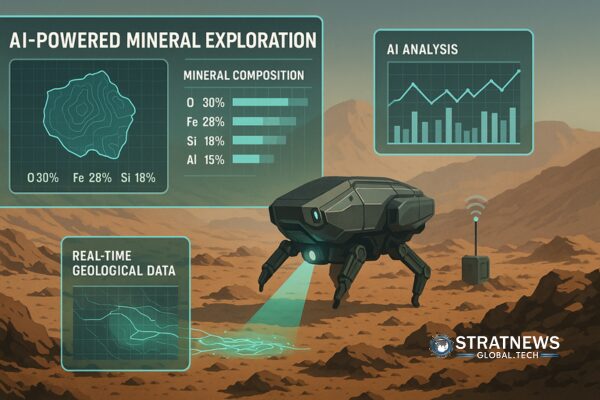US Transfers AI Program to Help Industry Forecast Critical Mineral Prices
A US AI tool to forecast the supply and pricing of critical minerals is now in the hands of a non-profit group. This move aims to increase market transparency and help manufacturers secure metal supplies without depending on China.
The AI-powered initiative, called Open Price Exploration for National Security (OPENS), was launched in late 2023 by the U.S. Department of Defense. It has now been transferred to the Critical Minerals Forum (CMF), a newly formed non-profit trade group.
A Tool to Strengthen Supply Chains
More than 30 companies, including Volkswagen, South32, MP Materials, and RTX, are the CMF’s founding members. The group plans to use the AI model to strike supply deals and reduce reliance on Chinese exports. According to CMF President Rob Strayer, the program is one of the boldest efforts yet to reshape how niche metals are bought and sold.
The AI aims to determine the fair value of metals by analysing actual production costs—such as labour and processing—and excluding external price manipulation. The goal is to help buyers and sellers confidently agree on long-term contracts, even if market prices are skewed by overproduction or export restrictions.
Some state-led partnerships are already emerging. Nevada officials said they will use CMF’s AI to support copper smelting investment. The U.S. currently operates just two copper smelters and relies heavily on imports.
Navigating a Complex Market
The AI program is designed for metals that are lightly traded or vulnerable to manipulation—such as nickel, cobalt, rare earths, and gallium. These materials are essential for green technologies, yet their markets are often opaque.
In one example, the AI could project global nickel availability in 2028 if the U.S. imposed a steep tariff on Indonesian imports. This information could guide investment in American mining projects and help manufacturers secure future supplies.
The CMF acknowledges that buyers may have to pay above market rates to guarantee availability. However, this trade-off is increasingly accepted in a volatile market shaped by geopolitical risk and growing demand for clean energy technologies.
Backed by Data and Global Reach
The AI tool uses over 70 mining-related data sets, drawing from sources such as the U.S. Commerce Department, FactSet, and Benchmark Mineral Intelligence. The Pentagon’s Defense Advanced Research Projects Agency (DARPA) will continue funding the program through 2029. The intellectual property will be transferred to CMF by 2027.
Developed in partnership with Charles River Analytics, Exiger, and Metal Miner, the AI is not designed to replace existing pricing models, but rather to add a new layer of insight. Its analysis includes private data unavailable to most market participants.
Phoenix Tailings, a Massachusetts-based rare earths processor and CMF member, hopes the AI will offer U.S.-based pricing tied to actual costs, helping firms secure financing and long-term contracts.
Growing Support, but Some Doubts
While many in the sector support the CMF’s mission, some are sceptical. Ian Lange of the Colorado School of Mines questioned the model’s real-world impact, comparing it to failed efforts to predict oil prices despite years of market analysis.
Nonetheless, the CMF is expanding. Membership is currently free, and the group is targeting new members from the semiconductor, aviation, and defence sectors. Foreign governments such as Zambia and the Democratic Republic of Congo have also expressed interest.
For now, CMF plans to remain a non-profit. Future pricing tiers may be introduced for advanced data access. The organisation has fewer than 10 employees, with plans to scale as demand grows.
As markets for critical minerals evolve, especially with the push for greener materials, the CMF hopes its AI will bring greater clarity. “Any tool that improves market modelling is extremely valuable,” said Brian Menell, CEO of TechMet and a CMF member.
with inputs from Reuters


